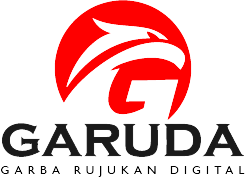STUDI KUALITATIF KONSEP TELECOMMUTING DI PERGURUAN TINGGI: PENGALAMAN PENGAJARAN DARING DOSEN DI MASA PANDEMI COVID-19
DOI:
https://doi.org/10.34127/jrlab.v9i2.360Abstract
The purpose of this qualitative research is to examine lecturers' understanding of how to experience telecommuting or working from home (WFH) through virtual or online teaching during the Covid-19 pandemic. Respondents for this study were 15 lecturers, who teach online from various private universities in Jakarta, Bogor, Tangerang and Bekasi (JABOTABEK). Semi-structured interviews via email and telephone were conducted using purposive sampling technique and content analysis approach. The results of this study illustrate that most of the lecturers (93%) understand the concept of telecommuting, the importance of information technology support and a home work environment to support their virtual or online teaching activities. The study also found several advantages of online teaching experiences such as flexibility, cost reduction and efficiency, work-life balance; and for the disadvantages, namely, lack of socialization for students and interaction between lecturers and students, and lack of infrastructure support, and the last is self-discipline.
Keywords: Telecommuting, online teaching, flexibility.
References
Belanger, F., Collins, R. W., & Cheney, P. H. (2001). Technology requirements and work group communication for telecommuters. Information Systems Research 12(2), 155-176.
Cambridge Dictionaries Online. (2016). Meaning of “self-discipline” in the English Dictionary. Cambridge: Cambridge University Press.
Chen, D.-T. (2003). Uncovering the provisos behind flexible learning. Educational Technology & Society, 6(2), 25-30.
Davis, E.A., Hodgson, Y. & Macaulay, J.O. (2012). Engagement of students with lectures in biochemistry and pharmacology. Biochemistry and Molecular Biology Education, 40(5), 300-309.
Dixson, M. (2010) “Creating effective student engagement in online courses: what do students find engaging?” Journal of the Scholarship of Teaching and Learning, vol. 10, no. 2, pp. 1–13.
Gorbunovs, A., & Kapenieks, A. (2012). Competences Development Process Recording for Multi-Competence e-Course. Proceedings of the International Scientific Conference “Society, Integration, Education” (vol. 1), (pp. 261–272). School Pedagogy, Higher Educational Institutions Pedagogy, Lifelong Learning. Rezekne, May 25th–26th
Hammarberg, K,, M. Kirkman,M and de Lacey, S (2016) Qualitative Research Methods: When to use them and how to judge them. Human Reproduction, Vol.31, No.3 pp. 498–501.
Harris, L. (2003), “Home-based teleworking and the employment relationship: Managerial challenges and dilemmas”, Personnel Review, Vol. 32, No. 4, pp. 422-437.
Hyrkkänen, U., Kojo, I., & Nenonen, S. (2012). The virtual reality of work-how to create a workplace that enhances well-being for a mobile employee. In C. S. Lanyi (Ed.), Virtual reality and environments (pp. 193–204).
Kasparova, E. (2006) Virtual teams and team nets. Current Developments in Technology-Assisted Education, pp. 1501-1504.
Kothari, C. R. (2004). Research Methodology: Methods and techniques. New Age International
Kurland, N. B., and Bailey, D. E. (1999). Telework: The advantages and challenges of working here, there, anywhere, and anytime. Organizational Dynamics 28(2), 53-68.
Li, K. C., & Wong, B. Y. Y. (2018). Revisiting the Definitions and Implementation of Flexible Learning. In K. C. Li, K. S. Yuen, & B. T. M. Wong (Eds.), Innovations in Open and Flexible Education (pp. 3-13). Singapore: Springer Singapore.
Mohite, M.D & Kulkarni, R.V. (2019). Job Satisfaction Factors of Employee in Virtual Workplace: Review. International Journal of Trend in Scientific Research and Development (IJTSRD).38-42
Moore et al (1990), The Effects of Distance Learning: A Summary of the Litterature.
Morrison, G. R., Ross, S. M., Kemp, J. E., & Kalman, H. (2010). Designing effective instruction: Applications of instructional design (6th. Ed.), NewYork, NY: Wiley
Murphy, M. J., Levant, R. F., Hall, J. E., & Glueckauf, R. L. (2007). Distance education in professional training in psychology. Professional Psychology: Research and Practice, 38, 97–103.
Nuwer, R. (2016). No workplace like home. Scientific American Mind, 27, 38–43.
Oliver, C. (2009). Teaching at a distance: The online faculty work environment. Saarbrücken, Germany: VDM Verlag
Pinsonneault, A., & Boisvert, M. (2001). The Impacts of Telecommuting on Organizations and Individuals: A review of the literature. In Johnson, N. J. (Ed.) Telecommuting and Virtual Offices: Issues and opportunities (p. 163-185). Hershey, PA.: Idea Group Publishing.
Quoquah, F., Seong, L.C., & Malik, H.A. (2013) Malaysian Employees Perception Pertaining To Telework. Business and Management Quarterly Review, 4(1), 63-76,
Rovai, A. P., Wighting, M. J., & Liu, J. (2005). School Climate: Sense of classroom and school communities in online and on-campus higher education courses. The Quarterly Review of Distance Education 6(4), 361-374.
Solano, M. T. & Kleiner, B. H. (2001), “Effects of telecommuting on organizational behaviour”, Management Research News, Vol. 24, No. 3/4, pp. 123-126.
Stadtlander, L., Sickel, A., & Giles, M. (2014). The online faculty work environment.
Stosic Lazar (2015) (IJCRSEE) The Importance of Educational Technology in Teaching. International Journal of Cognitive Research in Science, Engineering and Education Vol. 3, No.1.
Tucker, R., & Morris, G. (2012). By Design: Negotiating Flexible Learning in the Built Environment Discipline. Research in Learning Technology, 20(1).
Tustin, D. (2014). Telecommuting academics within an open distance education environment of South Africa: More content, productive, and healthy? International Review of Research in Open and Distance Learning, 15, 185–214.
Downloads
Published
Issue
Section
License
Jurnal Lentera Bisnis disebarluaskan di bawah Lisensi Creative Commons Atribusi-BerbagiSerupa 4.0 Internasional.
Berdasarkan ciptaan pada https://plj.ac.id/ojs/index.php/jrlab





